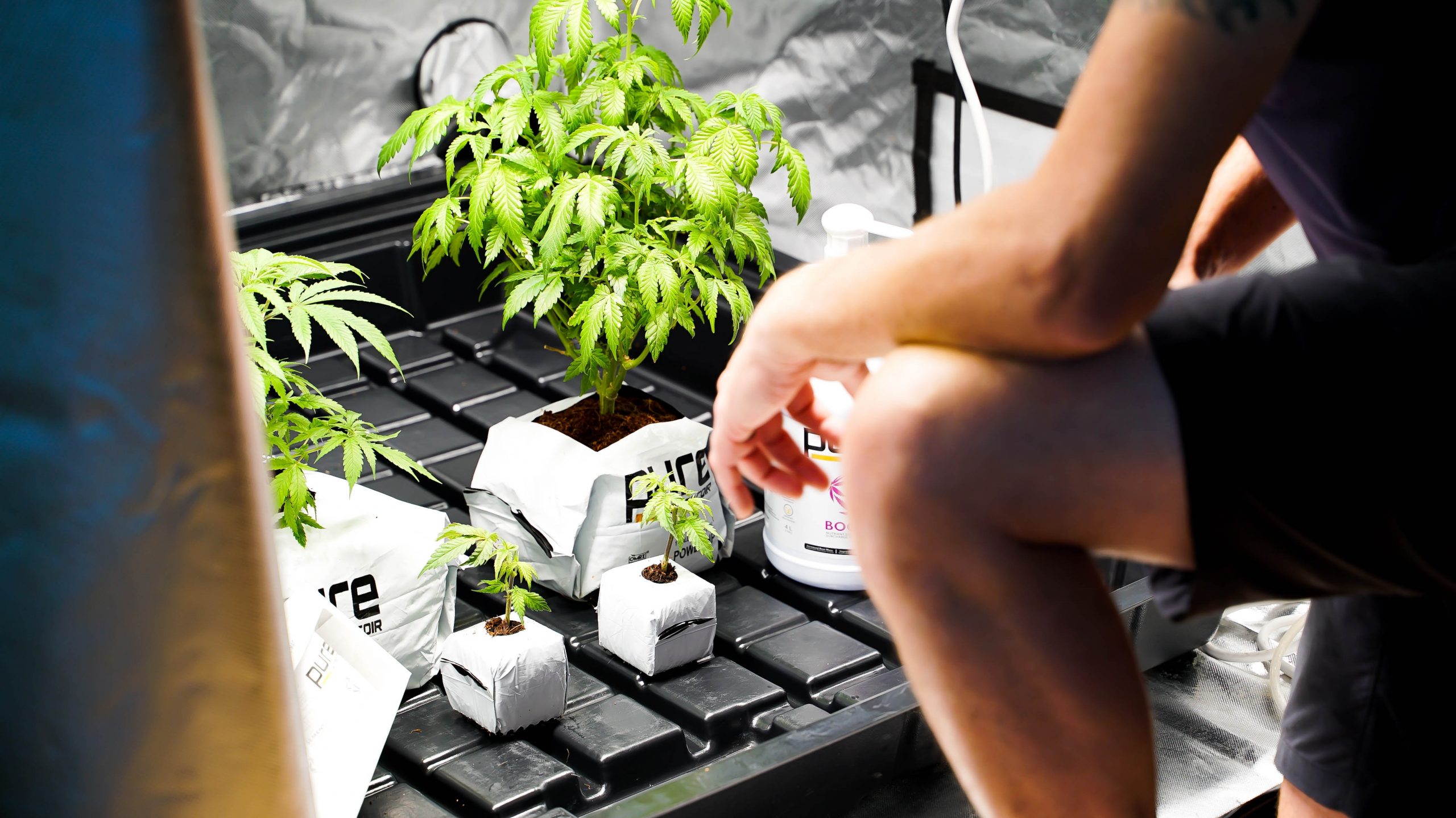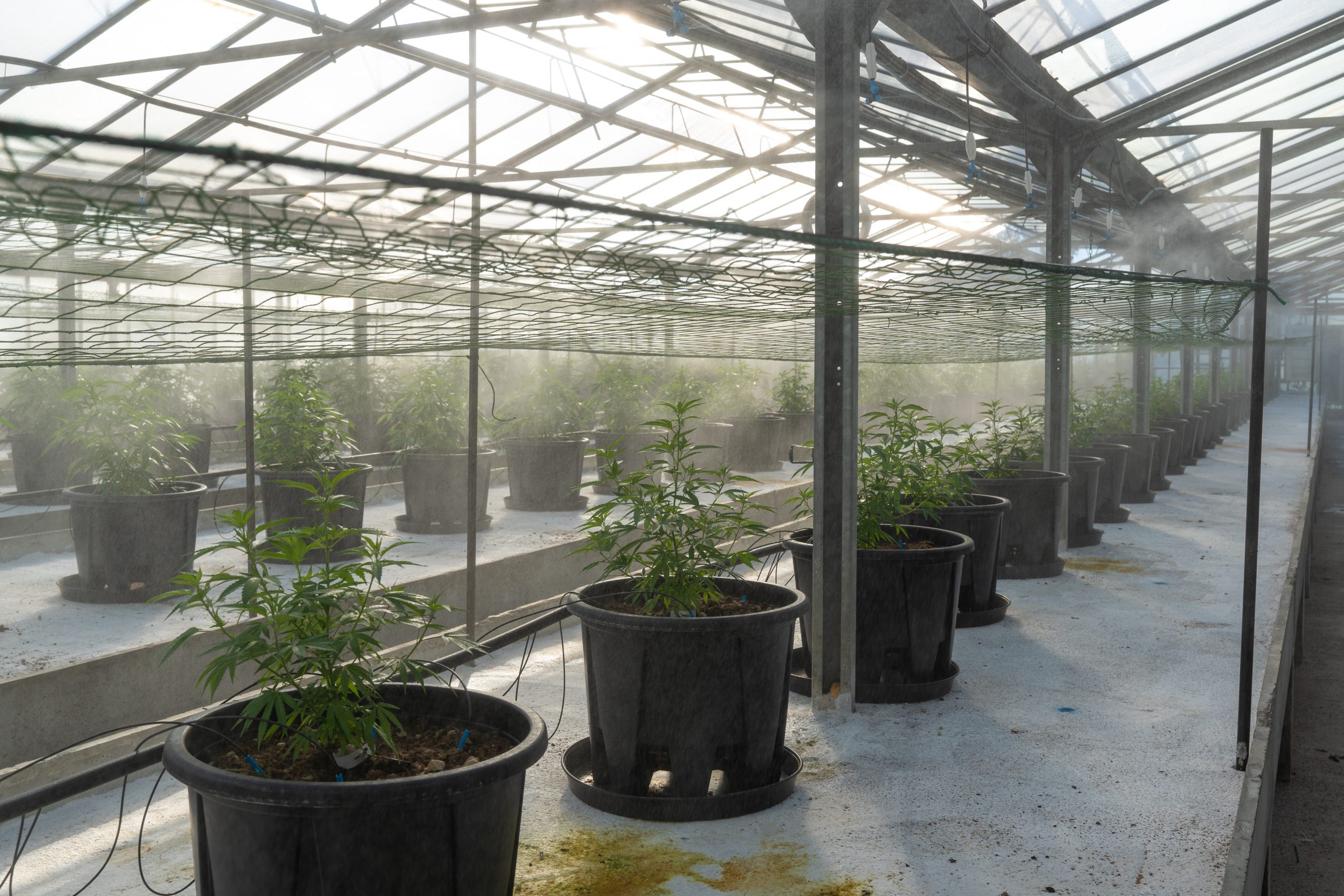
During the seedling stage in a cannabis plant’s life cycle, the growing plants can be susceptible to a number of harmful things. It is the job of the grower to ensure the young plants survive their seedling stage and go on to become part of a high-yielding crop. Doing this requires knowledge, patience, and a gentle hand.

Photo by Jonathan Olsen-Koziol on Unsplash
Bringing in new plants, especially new strains, can be exciting. However, they cannot join your other vegetative plants just yet. New plants, whether they are seedlings or flowering, should be quarantined from the other plants for a week minimum to prevent the spread of viruses, pests, and other undesirable problems.
During the quarantine stage, plants should be monitored daily for any changes or signs of viruses or pests. Sprays may be required depending on the conditions the seedlings arrive in. Any treatment should be determined while closely monitoring your new arrivals every day.
The goal of quarantining new plants is to ensure viruses are not introduced to the plants already living in the grow. Implementing this particular practice can help keep all of your cannabis plants feeling and looking their best, leading to better harvests.
Have Verne Bio do molecular testing! Click here to get started!

Just like children, seedling cannabis plants need a balanced diet to grow up healthy and strong. The amount of nutrient mixtures is determined by the brand used. Some growers will even control nutrient feedings by using live soil. No matter how you choose to provide nutrients for your seedling cannabis plants, providing them with a balanced diet will help protect them against viruses and other issues.
According to the Royal Horticulture Society, “Plants can also suffer deficiencies where the growing conditions are poor and the plants are unable to take up nutrients present in the soil. Very acid or alkaline conditions, dryness, and waterlogging can all make it difficult for plants to take up soil nutrients.”
When keeping an eye on your seedling plants, paying particular attention to your plant’s roots is important. The roots can tell you a lot about a plant’s health. Oftentimes, seedlings will come in trays using cubes that will absorb water and allow the roots to become established before planting them in the soil.
According to information from the National Center for Biotechnology Information, “The root system consists of many individual roots of different types and ages. Each individual root has specific development, resource acquisition, and transport traits, which change with root growth.”
Healthy roots are white with multiple tendrils growing downwards. Grey or browning roots could indicate that a plant is suffering from a virus. Slow root growth or dying roots could also indicate the same.

Photo by CRYSTALWEED cannabis on Unsplash
When it comes to keeping your seedling plants healthy and happy, a balancing act is required. Seedling plants are in a delicate stage of their lifecycle, and a nutrient imbalance can disrupt growth, leave seedlings susceptible to viruses or pests, and could even kill your little plants.
Keeping the soil neither too dry nor too wet is essential for healthy root growth. Seedlings that are kept in too dry of soil risk stunted root growth and even death. On the other hand, seedlings that are kept in soil that is too wet can run the risk of developing weak roots or even root rot.
Developing a balanced feeding schedule that also is adjusted as the seedling cannabis plants grow is also important. As seedling plants grow, so do their needs. Growers should adjust feeding schedules as needed to help maintain healthy growth and development.
If you want to keep viruses away from your seedling plants, then developing and enforcing Standards of Practice (SOP for short) will go a long way toward achieving that goal. A detailed and enforced SOP will help establish a good foundation for keeping all of your plants healthy from the seedling stage to the moment they are harvested.
When developing the SOPs for your grow, there are a few items to keep in mind. These items include;
While this is one of the less glamorous parts of cannabis cultivation, it can help prevent problems from developing. Each grow should have an SOP tailored to its plants, equipment, and procedures. Having this on hand and ensuring all staff members know and have access to it will help facilitate communication and help prevent problems from occurring. By investing in an SOP, you are investing in the quality and yield of your cannabis crop.
As always, education is a key part of understanding and preventing viruses and other unwanted problems from impacting your cannabis crop. Verne Bio is dedicated to providing educational content for growers of all experience levels.
To stay up-to-date on all the latest information, please subscribe to the Verne Bio newsletter. Readers will receive information about new articles, product sales, and more. With our newsletter, the education comes right to your inbox.
For more information about the viruses that can impact your cannabis plants, whatever stage of their lifecycle they may be in, please visit our blog. While there, readers can expect to find information on topics such as;
With Verne Bio on your side, you are investing in knowledge that can help make your grow a success. The world of cannabis is always evolving, are you evolving with it?
Works Cited
The Royal Horticulture Society. “Nutrient deficiencies.” RHS, 2023, https://www.rhs.org.uk/prevention-protection/nutrient-deficiencies. Accessed 23 May 2023.
Tajima, Ryosuke. “Importance of individual root traits to understand crop root system in agronomic and environmental contexts.” NCBI, 2021, https://www.ncbi.nlm.nih.gov/pmc/articles/PMC7973490/. Accessed 23 May 2023.

to receive updates and news on our products, events and promos!